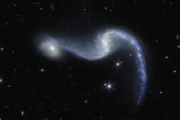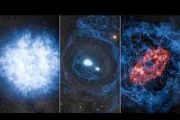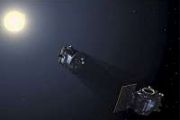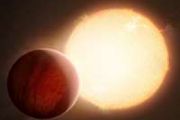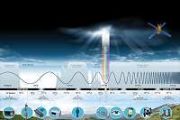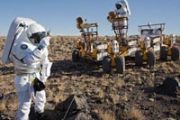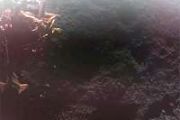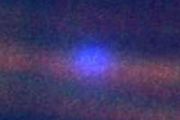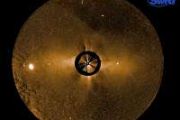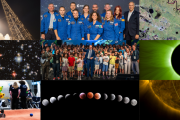
Copernical Team
Kymeta launches first multi-orbit, on-the-move flat-panel antenna for military users
 Kymeta has launched at AUSA 2023 - the Osprey u8 HGL, a hybrid geostationary/low Earth orbit (GEO/LEO) terminal purpose-built for military users.
Leveraging Eutelsat Group's (formally known as OneWeb) LEO satellite network, the Osprey u8 HGL is a complete, customizable solution that can be easily mounted on a wide array of military vehicles and vessels, providing connectivity on-the-move.
Kymeta has launched at AUSA 2023 - the Osprey u8 HGL, a hybrid geostationary/low Earth orbit (GEO/LEO) terminal purpose-built for military users.
Leveraging Eutelsat Group's (formally known as OneWeb) LEO satellite network, the Osprey u8 HGL is a complete, customizable solution that can be easily mounted on a wide array of military vehicles and vessels, providing connectivity on-the-move. SSC wants 'Project Apollo' to accelerate advances in Space Domain Awareness
 Space Systems Command (SSC), the United States Space Force (USSF) field command responsible for acquiring, developing, and delivering resilient space capabilities, is now accepting applications for its inaugural Project Apollo cohort. Details and on-line applications can be found at www.sdataplab.org.
Project Apollo is a voluntary, collaborative tech accelerator that brings U.S. companies,
Space Systems Command (SSC), the United States Space Force (USSF) field command responsible for acquiring, developing, and delivering resilient space capabilities, is now accepting applications for its inaugural Project Apollo cohort. Details and on-line applications can be found at www.sdataplab.org.
Project Apollo is a voluntary, collaborative tech accelerator that brings U.S. companies, Planet's Pelican tech demonstration satellite ready for launch
 Planet Labs PBC (NYSE: PL) reports that its Pelican tech demonstration satellite, Pelican-1, along with 36 SuperDoves, have arrived at Vandenberg Space Force Base in preparation for launch next month. Pelican-1, designed and manufactured by Planet, is the first tech demonstration of Planet's next-generation, high-resolution fleet, which is expected to replenish and improve upon Planet's existing
Planet Labs PBC (NYSE: PL) reports that its Pelican tech demonstration satellite, Pelican-1, along with 36 SuperDoves, have arrived at Vandenberg Space Force Base in preparation for launch next month. Pelican-1, designed and manufactured by Planet, is the first tech demonstration of Planet's next-generation, high-resolution fleet, which is expected to replenish and improve upon Planet's existing Momentus customer satellites integrated and shipped to SpaceX launch site
 Momentus Inc. (NASDAQ: MNTS) has integrated its customers launching on the SpaceX Transporter-9 mission and shipped the payloads to Vandenberg Space Force Base for integration with Falcon 9 ahead of launch, which is targeted for no earlier than November 2023.
Momentus will use a deployer to place five satellites into Low-Earth Orbit for four different customers:
The b>AMAN-1 /b> Ear
Momentus Inc. (NASDAQ: MNTS) has integrated its customers launching on the SpaceX Transporter-9 mission and shipped the payloads to Vandenberg Space Force Base for integration with Falcon 9 ahead of launch, which is targeted for no earlier than November 2023.
Momentus will use a deployer to place five satellites into Low-Earth Orbit for four different customers:
The b>AMAN-1 /b> Ear Finding explanation for Milky Way's warp
 The Milky Way is often depicted as a flat, spinning disk of dust, gas, and stars. But if you could zoom out and take an edge-on photo, it actually has a distinctive warp - as if you tried to twist and bend a vinyl LP.
Though scientists have long known through observational data that the Milky Way is warped and its edges are flared like a skirt, no one could explain why.
Now, Harvard
The Milky Way is often depicted as a flat, spinning disk of dust, gas, and stars. But if you could zoom out and take an edge-on photo, it actually has a distinctive warp - as if you tried to twist and bend a vinyl LP.
Though scientists have long known through observational data that the Milky Way is warped and its edges are flared like a skirt, no one could explain why.
Now, Harvard Tracing the origin and energization of plasma in the heliosphere
 Imagine that you have a secret decoder ring that you can use to decipher a secret message with important clues about things around you: where they came from, why they are there, and what will become of them in the future. Now imagine that the secret decoder ring is actually a sensor that can be flown in space to unravel secrets about the matter in the solar system. Where did this matter originat
Imagine that you have a secret decoder ring that you can use to decipher a secret message with important clues about things around you: where they came from, why they are there, and what will become of them in the future. Now imagine that the secret decoder ring is actually a sensor that can be flown in space to unravel secrets about the matter in the solar system. Where did this matter originat Source of electron acceleration and X-ray aurora of Mercury
 Since Mercury is the closest planet to the Sun among the solar system planets, it is strongly influenced by the solar wind, a high-speed (several hundred km/s) stream of plasma blowing from the Sun. Explorations of Mercury was first carried out by the Mariner 10 spacecraft in 1974 and 1975, which revealed that Mercury has a magnetic field, and thus a magnetosphere, similar to that of Earth. In t
Since Mercury is the closest planet to the Sun among the solar system planets, it is strongly influenced by the solar wind, a high-speed (several hundred km/s) stream of plasma blowing from the Sun. Explorations of Mercury was first carried out by the Mariner 10 spacecraft in 1974 and 1975, which revealed that Mercury has a magnetic field, and thus a magnetosphere, similar to that of Earth. In t Evolution Space to produce and test solid rocket motors at Stennis
 NASA's Stennis Space Center near Bay St. Louis, Mississippi, joined with Evolution Space on Oct. 10 to announce plans for the aerospace company to establish production and testing operations for solid rocket motors onsite.
"This is another great addition to south Mississippi's commercial space engagement," Center Director Dr. Rick Gilbrech said. "Evolution Space gains access to critical NA
NASA's Stennis Space Center near Bay St. Louis, Mississippi, joined with Evolution Space on Oct. 10 to announce plans for the aerospace company to establish production and testing operations for solid rocket motors onsite.
"This is another great addition to south Mississippi's commercial space engagement," Center Director Dr. Rick Gilbrech said. "Evolution Space gains access to critical NA 5 things to know about NASA's deep space optical communications
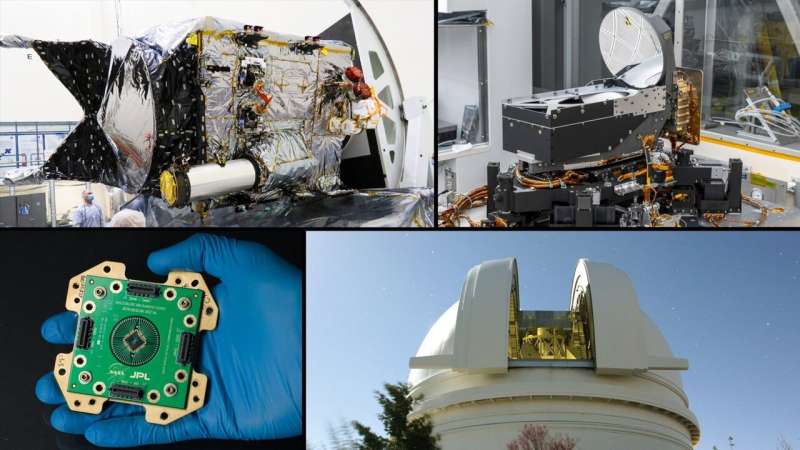
Slated to launch on Oct. 12 with the Psyche mission, DSOC will demonstrate technologies enabling the agency to transmit higher data rates from deep space.
NASA's pioneering Deep Space Optical Communications (DSOC) experiment will be the first demonstration of laser, or optical, communications from as far away as Mars.
Want to explore Neptune? Use Triton's atmosphere to put on the brakes
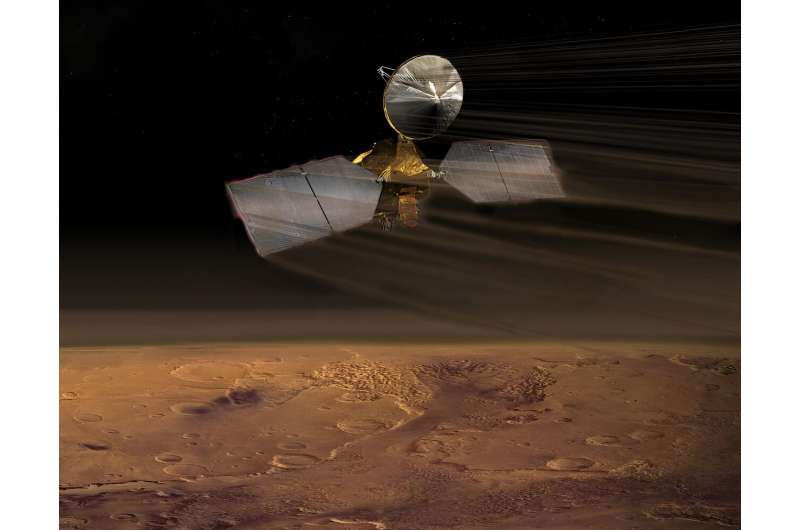
Aerobraking is commonly used to slow down spacecraft when they arrive at various planetary systems. It requires a spacecraft to dip into the atmosphere of a celestial body in the planetary system, such as a moon or the planet itself, and use the resistance from that atmosphere to shed some of its velocity. That slow-down would then allow it to enter an orbit in the planetary system without carrying the extra fuel required to do the maneuvers through powered flight, thereby saving weight on the mission and reducing its cost.
Unfortunately, saying the orbital dynamics of such a maneuver are complicated is an understatement. But ultimately, for any aerobraking to be viable, someone has to do the math. And that's just what Jakob Brisby and Jame Lyne, a graduate student and professor at the University of Tennessee Knoxville, did for some of the least visited planetary systems in the solar system—Neptune.












